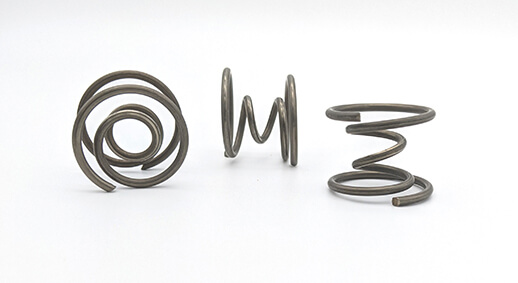Get unique, complex parts easily. No matter your requirements, Chaoyi Spring creates hard-to-produce coil springs and wire forms.
Let us help you create the custom wire form you need, from S-hooks and J-hooks to utility hooks and more.
We work closely with customers across a wide range of industries, helping them design and manufacture made-to-order parts.
Why choose Chaoyi Spring? We prioritize customer-focused collaboration, modern equipment and the latest technology to make your parts per print.
Find the information and guidance you need, from measuring a spring to learning about materials, placing an order and much more.
Compression springs, ubiquitous in mechanical systems, play a crucial role in storing and releasing mechanical energy. They are essential components in numerous applications, ranging from everyday items like pens and


Compression springs, ubiquitous in mechanical systems, play a crucial role in storing and releasing mechanical energy. They are essential components in numerous applications, ranging from everyday items like pens and door hinges to complex machinery like engines and medical devices. This comprehensive guide delves into the world of compression springs, covering their design principles, various applications, and the advantages they offer in enhancing performance and reliability.

Compression springs, as the name suggests, are helical coils designed to absorb and release energy by compressing. They are typically made of spring steel wire, carefully coiled into a helix with a specific number of turns. When a force is applied to the spring, it compresses, storing potential energy. Once the force is removed, the spring expands, releasing the stored energy. This energy storage and release mechanism is the essence of their function.
The design of a compression spring is crucial to ensure it meets the specific requirements of the application. Key parameters include wire diameter, coil diameter, number of coils, spring rate, and material properties. These parameters dictate the spring's stiffness, load capacity, and overall performance.
Compression springs are remarkably versatile and find their way into countless applications across diverse industries. Some notable examples include:
The widespread adoption of compression springs stems from their numerous benefits, including:
Designing a compression spring involves a systematic approach, considering various factors such as the required load, deflection, space limitations, and desired spring rate. Engineers utilize specialized software and formulas to determine the optimal spring parameters.
The process typically involves:
Compression springs are indispensable components in countless mechanical systems, providing energy storage, force control, and motion control. Their versatility, durability, and cost-effectiveness have made them ubiquitous in various industries. Understanding the design principles, applications, and benefits of compression springs is crucial for engineers and designers seeking to optimize their systems for performance and reliability. By carefully considering application requirements and following a systematic design process, engineers can select and implement compression springs effectively, ensuring smooth operation and long-term durability.
As technology continues to evolve, compression springs will continue to play a vital role in mechanical systems, adapting to new applications and challenges. Understanding their fundamental principles, design considerations, and advantages will remain crucial for engineers and designers seeking to create innovative and reliable systems.
Browse some of the custom wire forms and springs that we manufacture. Don’t see what you need? We specialize in made-to-order products that meet your application requirements.
Visit Our GalleryNeed a custom wire form or coil spring? We make it work. Fill out the contact form and a representative will respond within 1 business day. If you have a PDF or CAD file, you can submit to request a quote.